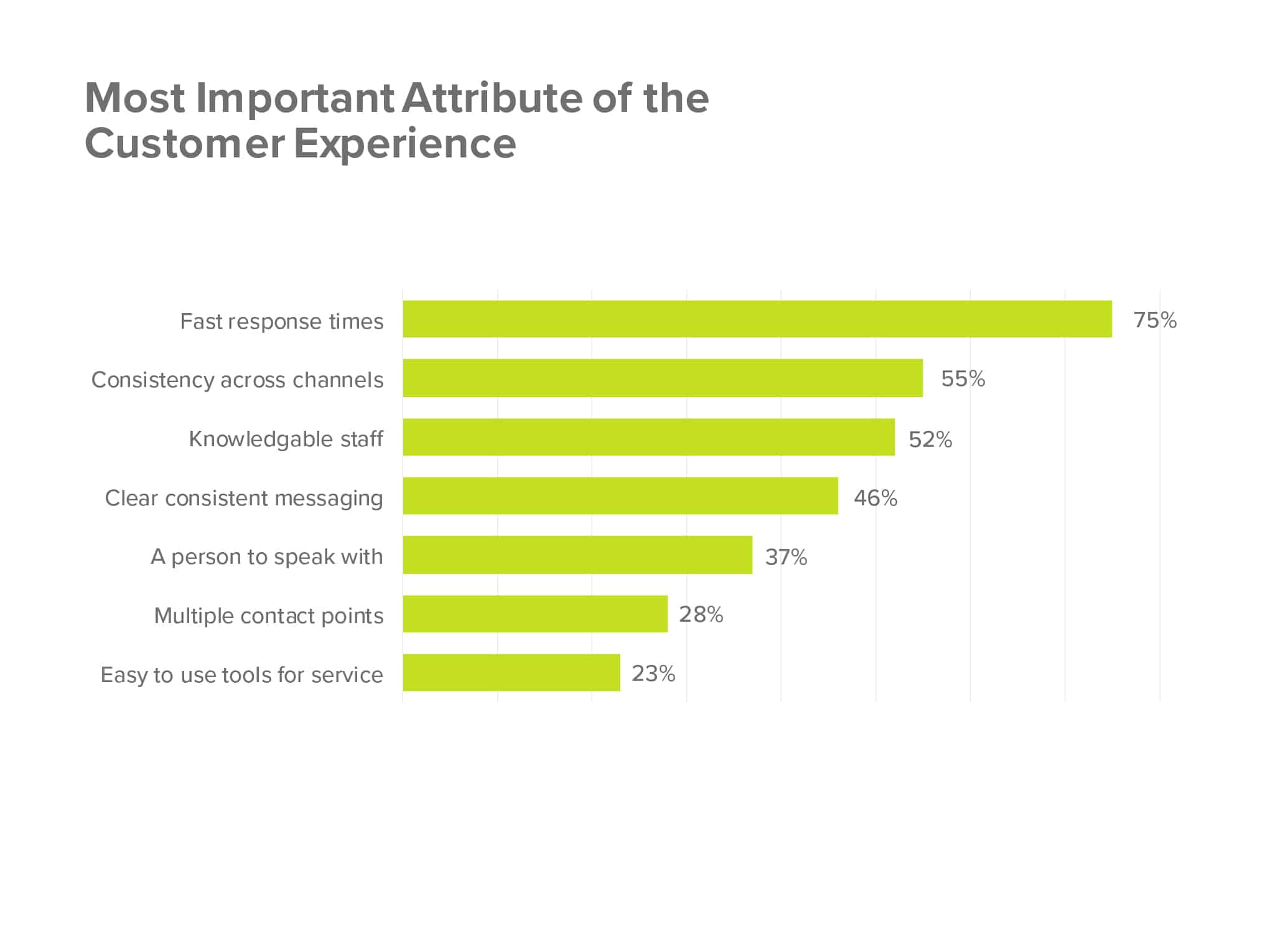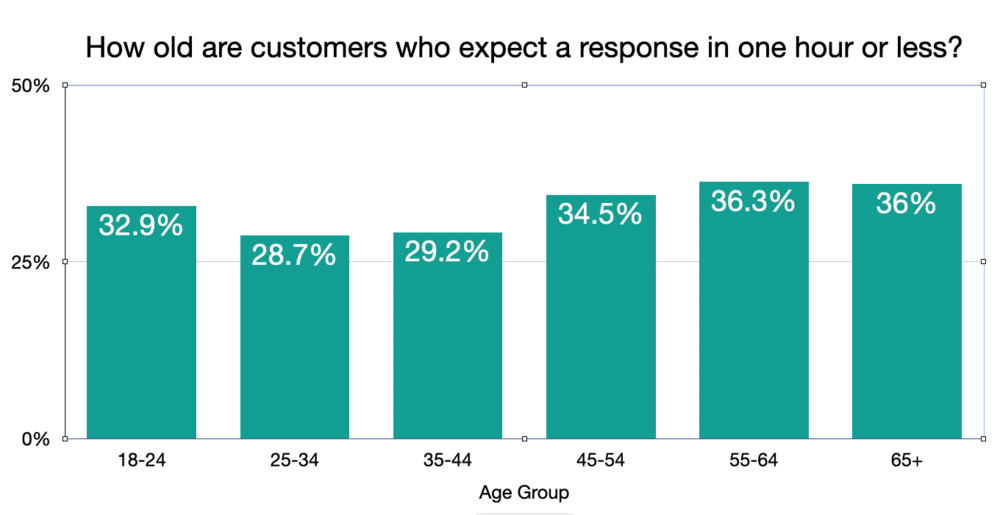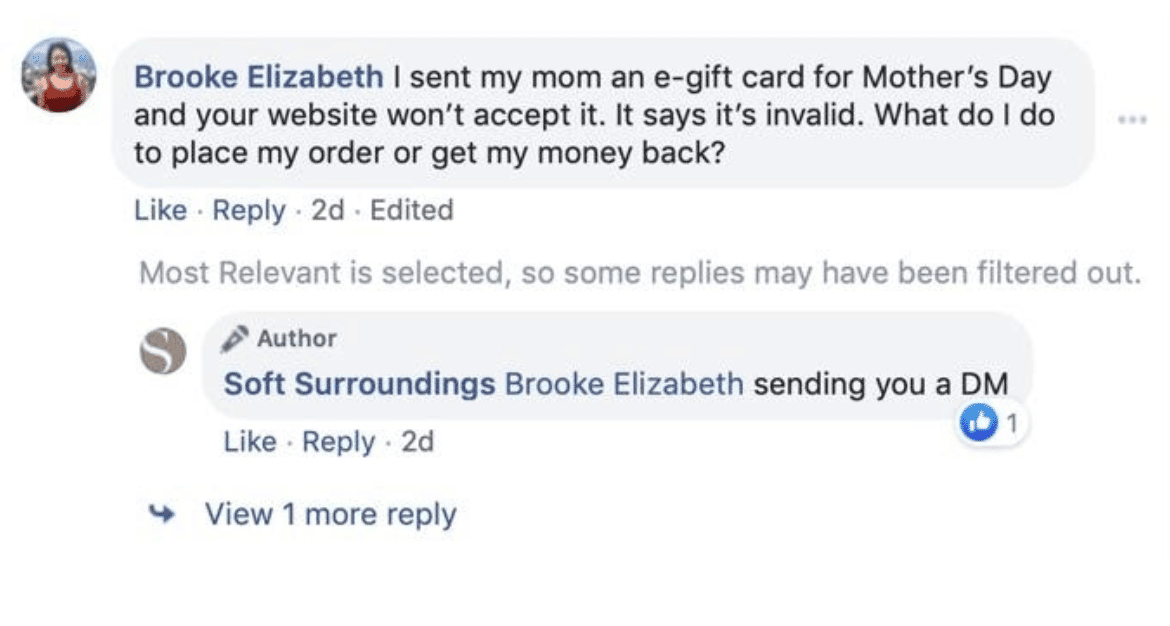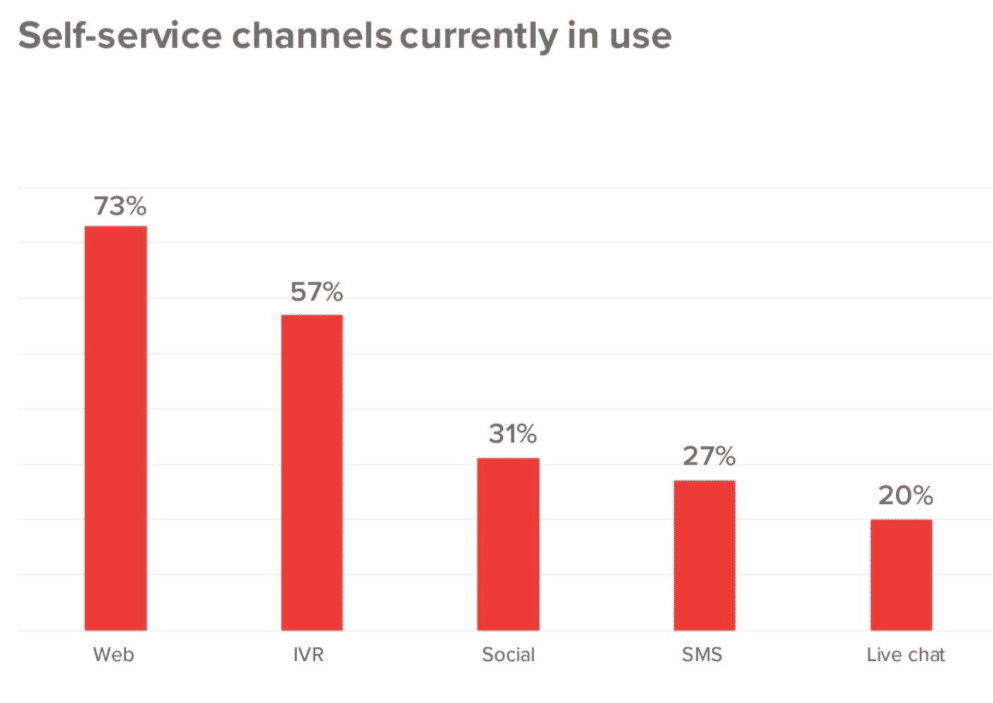Quick question: On your eCommerce list of daily priorities that should never be ignored, where do you rank your customer service or customer support?
Does it come first? Or second? Or maybe it’s not even on the list of priorities?
I know that it’s easy to think of eCommerce customer service and customer support as just another basic logistical process in your company and it might seem like a waste to invest money in your customer service and support team.
But considering that your business lies in your customer’s hands, shouldn’t customer service and support be of utmost importance in your company?
Your customer service and customer support team have a tremendous impact on your business – their everyday tasks have a direct influence on retainment, revenue, and overall growth of your company.
No matter how great your product is, it’s impossible to please customers if you have less-than-amazing customer service and support. This is to say that solid customer service and support equals positive customer experience.
So if your company doesn’t have solid customer service and support…well, good luck delighting customers and growing your revenue.
Today, we’re going to talk about how to improve e-commerce customer service and support. When you invest in your customer service and support team by implementing the tips we give in this article, you’ll reap the benefits in no time.
But first, what’s the difference between customer service and customer support?
Distinguishing between customer service and customer is not an easy thing to do, there’s a thin line that separates the two. Most people use them interchangeably probably because they have a lot of similarities than differences.
They are both about making life easy for the customers. They both use similar communication tools like phone, live chat, and email. They both require similar skills like active listening and empathy so as to give a customer a positive experience. They are both crucial in delivering a positive customer experience for every business.
I can go on and on…
But if you want to try and differentiate the two – you can think of customer service as proactive guidance and customer support as reactive help. To help you understand better, let’s dive into their definitions:
Defining eCommerce Customer Service
This refers to providing value for customers by helping them before, during, and after they make a purchase.
The kind of assistance provided by a customer service agent (human or chatbot) is non-technical –it’s usually aimed at improving customer experience and the relationship between a business and its customers.
"Great customer service is about making the customer feel as if they made the right decision when they chose our company to solve their problem." – Mike Sims #CustomerFirst
— HubSpot (@HubSpot) August 11, 2019
It’s actually the responsibility of customer service representatives to keep customers engaged by providing both reactive and proactive assistance.
This is to say that they don’t have to wait for queries from customers, but they should readily avail of education, advice, and recommendation in order to enhance a positive customer shopping experience.
Ecommerce customer services agents typically do the following:
- listen and respond to customers’ needs and concerns
- Onboarding new customers
- Following up with customers
- Provide information about products and services
- Collecting customer feedback
- Take orders, determine charges, and oversee billing or payments
- Review or make changes to customer accounts
- Handle returns or complaints
- Record details of customer contacts and actions are taken
- Research answers or solutions as needed
- Refer customers to supervisors, managers, or others who can help
Looking at the above responsibilities of a customer service representative, one can’t be successful in this role unless they have a deep understanding of the products or services.
Defining eCommerce Customer Support
This is all about providing technical assistance to customers by helping them in planning, installing, troubleshooting, maintaining, and upgrading any issues they have after purchasing your product or service.
It’s impossible for a support team to build lasting relationships (between business and customers) if they do not know the ins-and-outs of the product or service offered.
This is the reason why customer support teams have to closely collaborate with product teams. Customer support teams should be included in meetings where decisions involving the product are made mainly because they are more involved with the end-to-end customer experience.
B2B eCommerce or SaaS websites are usually associated with the term customer support as they usually support customers with products and services that require technical assistance.
If you are to improve your customer support on your eCommerce website, then you have to measure it. The most critical KPIs a business should consider when measuring the effectiveness of their customer support team are:
- Net promoter score
- Customer satisfaction score
- Customer effort score
- Customer churn rate.
Some of these KPIs can also be used to measure the effectiveness of eCommerce customer service.
How to improve eCommerce Customer Service and Support?
It’s true, some eCommerce businesses may find it an uphill task to provide excellent customer service and support to all their customers since they are not interacting face-to-face.
But whatever eCommerce space you are in, B2B or B2C, if you follow the tried-and-tested tips we give in this section you will definitely enhance your service and support to your customers. And this is something that will delight your customers and keep them coming back to your store.
Speed matters in customers service & support
One last quick question: how quickly do you respond to your customers?
If you are one of those brands that keep customers waiting for long hours or days before responding to their questions, then expect either of these scenarios:
- Losing a good chunk of customers
- Being publicly shamed by customers
- Losing a lot of money.
According to customers themselves, the most important attribute of good customer service and support is fast response time. In other words, customers feel valued when they are responded to quickly.

So what does a fast or slow response time look like?
It’s really hard to answer this question as it really depends on your business goals. When it comes to emails, the recommended standard to respond to customer emails is one hour.
But according to a recent study – carried out in March 2020 – that included 3,200 people of different age groups, expectations differ by age group.

The study concluded that people aged 55-64 are the most demanding for fast responses.
But when it comes to eCommerce customers, the competition is fierce and this means that one hour may be a long time to keep your customers waiting.
If customers reach out, reps should respond in a matter of seconds or minutes. To help with such efficiency, consider using tools like chatbots and live chat.
Have a multichannel or omnichannel strategy
In today’s digital age, marketers need not narrow communication into one channel, but they have to use a plethora of channels available to engage their customers.
This is what a multichannel or omnichannel strategy is all about.
Both multi and omnichannel involve servicing and supporting customers across several physical and digital channels. Blending different communication channels so as to provide customers with options for how they would like to interact with a brand.
According to a study conducted by Zendesk, over 35% of customers expect to be able to contact the same customer service representative on any channel.
There are many channels you can use to offer assistance to your customers. But which one should you choose?
Well, it depends on where your targeted customers are.
If your targeted customers are avid Instagram users, then you will have to service and support them on Instagram in order to keep them happy. Likewise, if your customers are avid users of Facebook, then you have to be accessible on that platform.
Soft Surroundings is a good example of a women’s clothing eCommerce shop that uses a multi-channel customer service strategy. Their customers can interact with the brand on Facebook:

This engagement doesn’t only happen on Facebook, they also interact and answer customers’ questions on Instagram:

The idea of this strategy is centered around being where customers are and making it easy for them to access the company without any hassles.
When you establish a multichannel customer service strategy, make sure that your customers know about it. But most importantly, deliver quality customer service across all the channels so that you make your customers fall in love with your brand.
Offer a proactive approach
Providing assistance when a customer has a query is simply OK.
But if I can be honest with you, it’s nothing new and you won’t charm anyone just by doing that. That has always been the norm and it is what customers expect.
If you wish to amaze your customers and make them love, support and be loyal to your brand, then you have to anticipate their issues and needs, and address them even before they mention it.
This approach is known as proactive customer service or support.
There are many ways you can implement a proactive approach to your customer service and support. Creating CTA’s, instructional videos, troubleshooting trees, FAQs, chat widgets (with a pop-up message) are some of the ways to proactively provide customers with answers to their possible questions.
In order to provide excellent proactive service and support, you need to know areas that can be pain points on your website or puzzle customers.
You can do that by either monitoring your user activity (via Video Recordings) and by launching a survey that asks your customers for feedback.
Add a Live Chat
It might surprise you to learn that a small element on your website such as a live chat widget can enhance your conversions and help you understand your visitor’s behavior on your website.
We have released an infographic that explains the statistics and importance of having live chat customer support. Here are some of the informative stats in that infographic:
- 63% of consumers are more likely to return to a website that offers live chat
- 73% of customers find live chat to be the most satisfying way of communicating with a business
- 73% of customers were satisfied with their live chat experience compared to email (51%) and phone (44%).
- 77% of customers won’t make a purchase if there’s no live chat support
Looking at the above stats, you can see that adding a live chat can help with your customer experience and conversion rate.

It’s true, customers may decide to leave a site and if they come across challenges in trying to purchase, but with a live chat in place, they can quickly reach out to you for help.
If you already have a live chat added on your eCommerce website, you need to dig through the chats and look for pain points that your customers usually come across and improve your web usability.
Live chat applications/software isn’t only a gold mine that can give you valuable information, but they help you save a lot of money –no need to hire multilingual agents, live chat software can use online tools like Google Translate to answer customers in different languages.
Some live chat tools have an in-built translation feature that handles all languages.
Include customer self-service options
Gone are the days when customers used to depend on interacting with the support team –either via phone calls, emails, or chat widgets – to get their issues resolved.
40% of customers now prefer to use tools that help them access information which gives them solutions to their issues without requiring the assistance of a support team.
A study conducted by Dimension Data found that 73% of customers prefer using a company’s website for self-service instead of using SMS, Social Media, Live Chat, or IVR.

The most common types of customer self-service tools on a website include online discussion forums, how-to-videos, knowledge base, and FAQs.
But even though the self-service option lightens the work of your support team, it is important to make sure that it is easy to use. I had to mention this because 55% of customers say that web self-service portals are not user-friendly.
To simplify your self-service portal on your website, consider these five tips:
- Highlight the most popular FAQs
- Update your knowledge base section more regularly
- Use videos, screenshots, and audio to walk customers through a solution
- Include an easy-to-use search field
- Optimize self-service for mobile users.
A self-service will not only help improve your customer’s shopping experience, but it is also a smart way of reducing customer support costs.
Offer a 24-hour phone support line
Did you know: A huge portion of customer loyalty is determined by how easily accessible a business is to its customers.
Customers consider businesses that are available 24/7 as dependable and this paves the way to loyalty and retention.
It’s not every customer that has the patience to go through online support options. And as I mentioned earlier, speed and efficiency are key in an eCommerce space.
In customer service and support, the human touch has a real impact. But if you don’t have a call center software, there are many web applications and solutions you can use to provide customers with 24/7 support and service.
Personalize Customer Experiences
Customers have evolved over the years. They are becoming more demanding. They expect to be treated like kings and receive individual attention.
This is why personalization is kind of a big deal in customer service.
Even Seth Godin, the ultimate entrepreneur for the information age, acknowledges the importance of personalization by saying this:
Personalization wasn’t supposed to be a cleverly veiled way to chase prospects around the web, showing them the same spammy ad for the same lame stuff as everyone else sees. No, it is a chance to differentiate at a human scale, to use behavior as the most important clue about what people want and more importantly, what they need.
In its simplest form, personalization in customer service is all about delighting customers and satisfying them whenever they associate with the brand.
74% of marketers believe that personalized experiences increase customer engagement and they also say it increases conversions by 20%. With such stats, you really can’t deny that personalization is a game-changer that makes customers feel more connected and engaged with a brand.

When personalizing customer experiences in the eCommerce space, you’d need to gather data of web visitors and create relevant content that is customized and unique to each and every customer. This is why Paul Gillin says:
Personalization is pointless without knowing the individual. Understand the dreams, hopes, and fears that motivate your customers then hit them where it counts.
Actually, this means that you can’t personalize without knowing your visitors first. You can’t personalize without researching your customers first.
There are many ways to display personalization in customer service and brands should always make sure that they include as many as possible.
One of doing that is addressing each customer by name. This increases engagement and enhances a sweet relationship between you and your customers.
Jog your memory a bit and think back to your own personal experiences as a customer – didn’t you like it when you were addressed by name and those smiley emojis?
Connect and engage with mobile customers
We are now living in a mobile-first world, this means that your customer service and support team should be mobile-savvy. It is of utmost importance to ensure that your eCommerce website is optimized for mobile.
We have come across dozens of online shops that don’t provide any payment options on mobile devices. Imagine being a customer and facing difficulties when trying to check out –I’m sure you’d probably give up.
Nowadays, most customers visit websites using their mobile devices, so if you give them a positive customer shopping experience on their small screens, they will be delighted and not bother you with too many queries.
Use customer service software
To be at the top of the customer service and support game means being able to hear every query and timely respond to it before anyone gets frustrated.
But for a huge business that has a lot of customers or that uses a variety of communication channels, it can be difficult to keep track of all customer queries.
My dear friend, this is where customer service software comes in…

Having customer service software is worth every penny thanks to the massive potential it has to help your brand.
Besides making your life less complicated through automation and catering to your customers’ desires, good customer service software can:
- Improves accuracy and your agent’s knowledge
- Integrate your existing communication channels into one software.
- Keep all customer support information in one place.
- Offers round-the-clock support
- Prioritizes customer requests
- Provide you with essential statistics about your product and company performance.
- Improve your average response times and help you keep track of your customers and their tickets as well.
Nowadays, there are many customer service software that can help you keep up with new customer demands and expectations. But before you use any customer service software, make sure that it has the following three components:
- Usability: How easy is the software to set up and use? Will your agents enjoy using it on a daily basis?
- Effectiveness: How well does the software address the problem it is supposed to solve? Does the software work well on its own, or it has to be supplemented by another tool?
- Value: For the amount you pay, is the software worth it? Will your customers and team benefit from the software?
Over the years, customer expectations have changed. Having a robust set of tools is important now more than ever.
Measuring customer satisfaction
Are your customers satisfied with your products or services?
If your answer to that question is either yes or no. I have a follow-up question for you:
How do you know?
Well, there’s only one way to find out: measuring your customer satisfaction. This is important because you can only improve your overall customer service and support when you can ascertain the level of satisfaction they get from you.

When you measure customer satisfaction, you also have to implement changes based on customer feedback –this will help you continually improve the customer experience and retain more customers over the long haul. And if you think about it, this translates to longevity and a bright future for your business.
So if you are serious about checking the health of your relationship with your customers, look into the following customer satisfaction metrics:
- Customer Satisfaction Score: this metric is used to rate the overall satisfaction with service(s) received by a customer.
- Net Promoter Score: this metric is centered around this question – “how likely are you to recommend the service?” The answer is given on a scale from 1 to 10.
- Customer Effort Score: this is a metric that is used to understand how much effort a customer needs to exert to have their query answered.
There are a number of different metrics and methodologies used to measure customer satisfaction, but those three have proved to be reliable, fast, accurate, and consistent.
Conclusion: Anticipate FUDs that users might have on your eCommerce site
The approach to eCommerce customer service and customer support is a little bit different from offline settings. Considering that customer service and customer support teams can only call or chat with customers, there’s a great need to anticipate FUDs (fears, uncertainties, and doubts) that customers will experience during the buying process.
That requires you to consistently obtain customer feedback and analyze it to uncover the customer pain points. Once you have addressed all of the FUDs that customers might have, you can install proactive and self-service features that guide customers through the customer journey.



